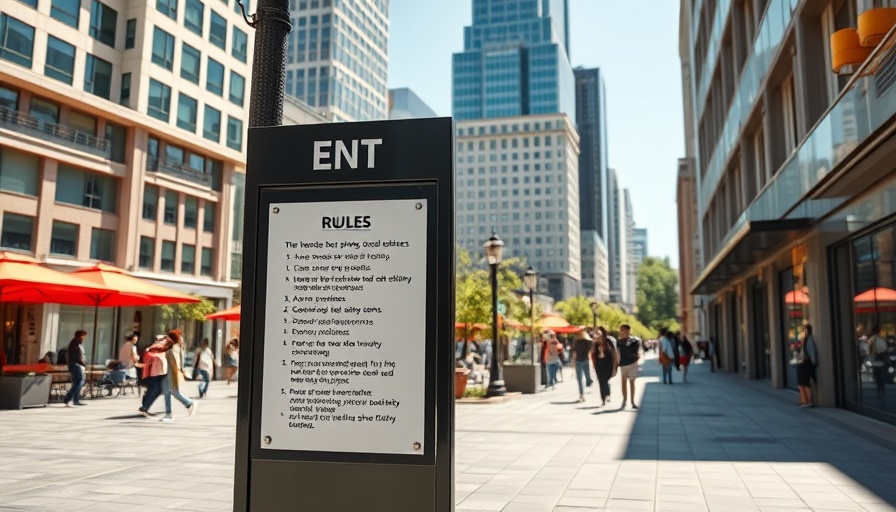
The Aftermath of Gunfire: A Community on Edge
The Banks, a popular entertainment and dining destination in Cincinnati, became the scene of panic and chaos early Sunday morning after gunshots rang out, sparking a renewed debate on safety in the area. Although the shooting occurred during hours meant to restrict entry to those 21 and older, witnesses report that security was virtually absent, leaving patrons vulnerable in the face of danger.
Witnesses described harrowing moments inside the Killer Queen bar, where people took cover or hastily evacuated as gunfire erupted. Nearby, bouncers at Tin Roof acted swiftly, locking patrons inside to protect them from the unfolding violence. Initial police reports confirm that a man was shot around 1 a.m., yet discrepancies in the timeline highlight a gap in communication and situational awareness among both patrons and security personnel.
The Role of Security Measures: Were They Effective?
The Banks implemented strict age restrictions in April, aiming to minimize disturbances and maximize safety after numerous complaints about rowdy crowds. A cost of approximately $250,000 funded these changes with barriers deployed to keep the rowdy youth at bay. However, the recent shooting suggests these measures may not be sufficient.
Upon inquiry from WCPO 9 News, The Banks management cited a disturbance that prompted a large crowd to break through barriers — an admission that raises serious questions about the effectiveness of the existing security protocols. "We chose not to reset the barriers for the balance of the evening to ensure crowd safety," said a spokesperson. Yet, without adequate security personnel on-site, these precautions could not be enforced, leading to dire consequences.
A Deeper Look at Community Sentiment
The community's reaction reflects a broader concern about public safety in entertainment districts. Residents like Dan Norrish, living in proximity to The Banks, expressed mixed feelings about the recent changes. While he supports the initiative, he also reflects on the intimidation he feels seeing large groups of young people gathering. Norrish's experiences underscore the challenge of balancing vibrant nightlife with community safety, as he desires a peaceful environment for all ages.
Local business owner Jim Moehring concurs, pointing out that many owners have long discussed the need for enhanced security. "It’s just an added layer of protection for our customers. The frustrating part is that these kids are not our customers," Moehring remarked, illustrating the divide between local businesses and the unruly behavior stemming from external crowds.
Future Predictions: What Lies Ahead for The Banks?
In light of this shooting, The Banks must undergo a critical reassessment of its security measures if it wishes to maintain its reputation as a safe attraction for residents and visitors. Moving forward, one potential avenue is investing in more robust on-site security personnel and improving communication protocols with law enforcement.
Additionally, community leaders and business owners could explore engaging with patrons through open forums, inviting feedback on safety measures, and fostering a collaborative approach to creating a safer environment. These actions could enhance community trust and ensure that current safety regulations are effectively communicated and observed.
Balancing Enjoyment with Public Safety
The intersection of nightlife and neighborhood safety is a delicate balance. While The Banks aims to attract visitors to support local businesses, incidents like the recent shooting present challenging questions about how to safeguard patrons without curtailing the vibrant atmosphere. Greater transparency from local officials, businesses, and event organizers is essential for rebuilding trust among community members.
As The Banks continues to navigate the aftermath of this tragic event, it's crucial for all stakeholders to consider how best to combine festive enjoyment with effective safety measures. Engaging citizens in this dialogue can facilitate a better understanding of community expectations and encourage a culture of shared responsibility.
Conclusion: The Call for Action
This situation is not an isolated incident but rather a reflection of a broader discussion surrounding public safety in urban spaces. As a community, it is imperative to advocate for stricter safety protocols, accountability, and effective communication mechanisms at thriving urban locations like The Banks. Only by addressing these concerns can we ensure that such a tragic event does not repeat itself. Community and business collaboration, alongside proactive measures, will pave the path forward for a safer environment.
 Add Row
Add Row  Add
Add 




Write A Comment